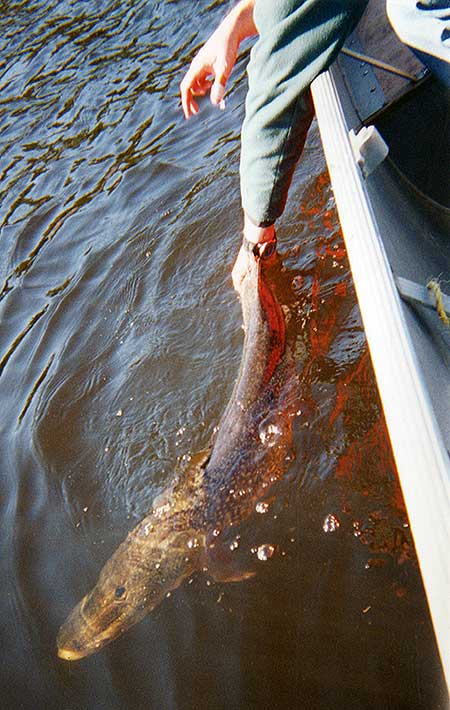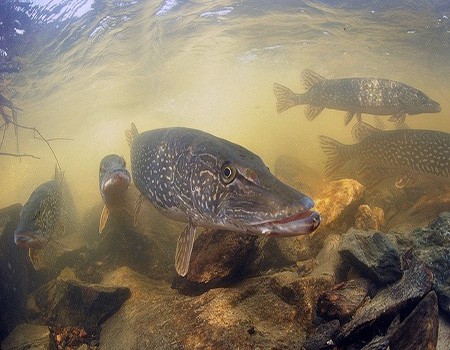Welcome to Cobham River Lodge: The Premier Destination for the Best Northern Pike Fishing in Canada
Discover the Magic of Cobham River Lodge
Nestled in the pristine wilderness of Canada, Cobham River Lodge is a haven for fishing enthusiasts. Recognized as the best Northern Pike fishing in Canada, our lodge offers an experience that is both thrilling and serene. Our waters are teeming with Northern Pike, a majestic fish known for its size and fighting spirit.
The Unique Experience of Catching a Giant Northern Pike
What sets our lodge apart is the unparalleled experience of catching a Northern Pike that’s not just large, but also rich in history. Imagine the adrenaline rush as you reel in a 33-year-old Pike, a magnificent creature that measures a staggering 49-½ inches and weighs 32 lb. Every catch tells a story, a testament to the rich biodiversity of our waters and the unforgettable memories you’ll create here.
Our Unwavering Commitment to Sustainable Fishing
At Cobham River Lodge, we believe in harmony with nature. Our sustainability efforts, spanning over four decades, reflect our commitment to conservation. We’ve implemented practices that not only ensure the well-being of the fish but also preserve the natural beauty of our surroundings. These efforts have led to the growth of some of the biggest Pike in Canada, making our lodge a beacon for sustainable fishing practices.
Award-Winning Excellence in Northern Pike Fishing
Our dedication to providing the best Northern Pike fishing experience in Canada has been recognized far and wide. Each year, numerous guests achieve the prestigious Manitoba Master Angler award, a reflection of the exceptional fishing experience we offer. This award is not just a badge of honor but a testament to our commitment to excellence, making us a top destination for anglers from around the globe.
Embark on the Ultimate Fishing Adventure
Cobham River Lodge is more than just a fishing spot; it’s a journey into the heart of Canada’s wilderness. As you navigate our waters, you’ll be surrounded by breathtaking landscapes, from dense forests to serene lakes. Our experienced guides, equipped with local knowledge, will ensure you have the best chance of making a big catch. So, whether you’re a seasoned angler or a newbie, we promise an adventure that you’ll cherish for a lifetime.


Join our waiting list!
Can’t make it happen this year, join our waiting list and get the date and trophy you’re after next year.
When you compare other fly-in fishing lodges, you’ll be hard-pressed to hear them mention a waiting list or that they are sold out. The reason is simple; we have the best Northern Pike fishing in Canada. While other Canada fishing lodges have up to 18 boats firing off the dock each morning, we limit our 76,000 acres to 5 or 6 boats. The result is the best Northern Pike fishing in Canada, but only for a few. After 45 years in business, this has resulted in “Sold out” and “Join our waiting list” being commonplace.
Get on the list and be one of the boats going out next year. We’d love to meet you and your group.
Trophy Northern Pike Fishing
Seasonal Patterns
Northern Pike (Esox Lucius)

Northern pike on the Cobham River tends to spawn in April or May (when water temperature first reaches about 9 °C (48 °F)). Shallow Bays are a favorite spawn location for Northern Pike, where the temperatures are warmer, and the vegetation is plentiful for fertilized eggs to attach. Northern pike is capable of breeding at two years of age and tends to lay a large number of eggs (8,500 eggs per pound, in other words, a 10-pound northern pike will lay on average 85,000 eggs this spring).
Within 16 days, the eggs hatch into larvae which live off their egg sacks until they develop to the point where they can feed themselves, at which time larvae are called fry. The fry will start swimming and feeding on planktonic while developing scales and fins; once working fins have developed, the fry has transitioned to a juvenile, otherwise known as a fingerling. The juvenile stage lasts until they start to interact with other adult fish.
The primary factors that allow Northern Pike to grow into a full-sized monster pike are our food supply and water quality. We built Cobham River Lodge on the Cobham because having two river systems (Cobham and Paulson) together provides our Northern Pike an endless supply of Walleye, Perch, White Fish, and Burbot to feed on. In addition, both river systems pass within 1 mile of our dock, which provides the most current and cleanest water.
The two river systems feed into our untouched 76,000 acres, private only to Cobham River Lodge northern pike fishermen. Unlike the warmer southern waters where the average life span of a northern pike is 10 to 12 years, the cold clear Northern Canada waters on the Cobham River allow the northern pike life span to exceed 30 years.
In summary, it’s simple; the fish need excellent conditions to allow the time to grow to the monster northern pike size we are accustomed to at Cobham River Lodge. Therefore, all northern pike at Cobham River Lodge must be released. In addition to protecting our large egg-laying northern pike, Canadian Natural Resources have proven that larger females’ offspring are genetically advantageous to smaller fish’s offspring making Cobham River Lodge the best Northern Pike fishing in Canada.
This means our fry and juvenile pike will have lower mortality rates and longer life spans and grow faster than those found in other waters without the natural foundation that the Cobham River and Paulson River provide to our fishermen.


